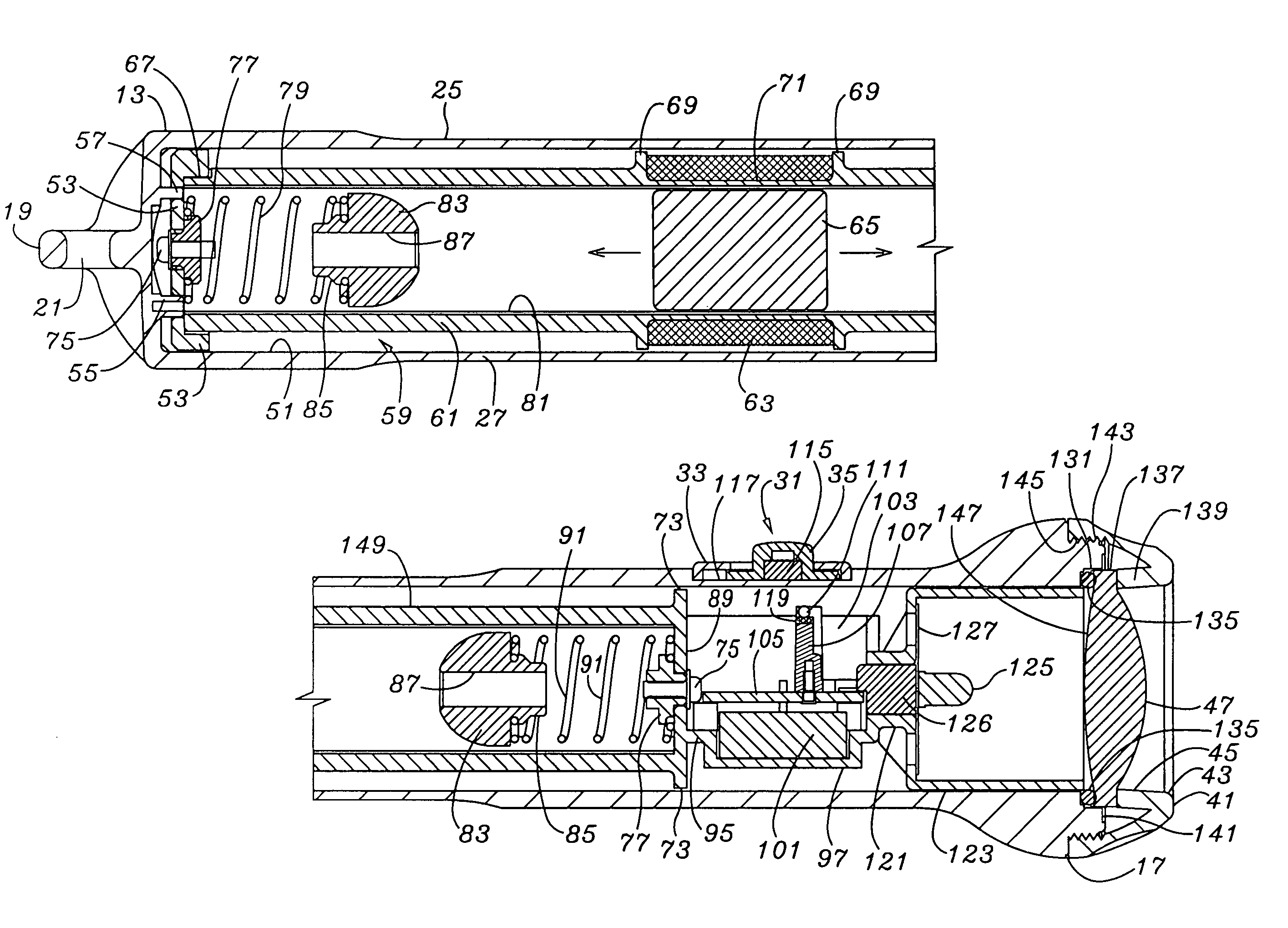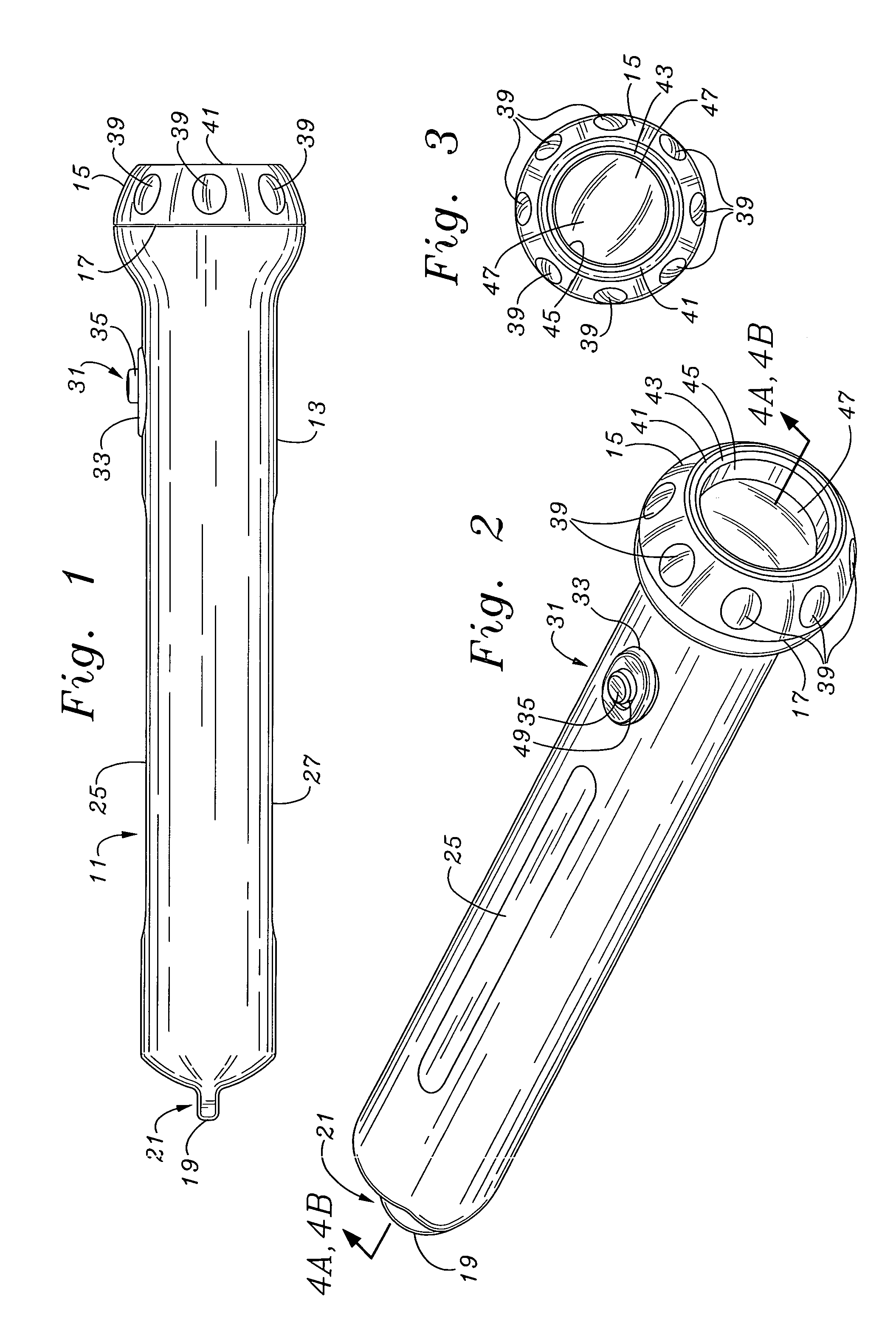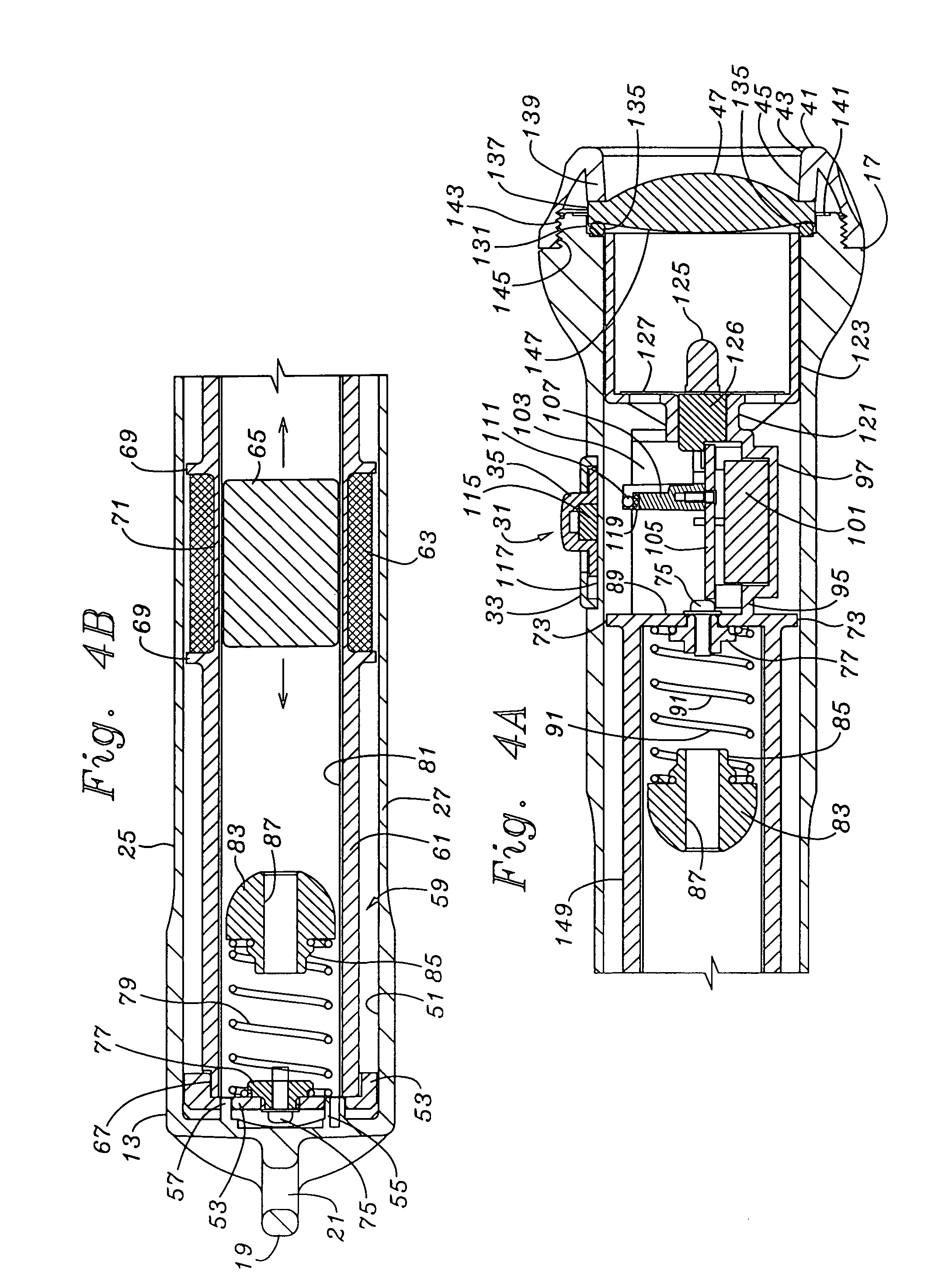Faraday flashlight
a flashlight and flashlight body technology, applied in the field of human-powered flashlights, can solve the problems of internal external integrity breach, eventual breach of sealing integrity, and light bulb change, and achieve the effects of saving mechanical energy, facilitating manual movement of the flashlight body, and conserving the residual momentum of the magn
- Summary
- Abstract
- Description
- Claims
- Application Information
AI Technical Summary
Benefits of technology
Problems solved by technology
Method used
Image
Examples
Embodiment Construction
[0033]The description and operation of the invention will be best initiated with reference to FIG. 1 and which illustrates a Faraday flashlight which will hereinafter be referred to as a flashlight 11. The external appearance of the flashlight 11 discloses two portions, a main housing chamber 13 portion and a front cap 15 portion which is separated from the main housing chamber 13 portion by a dividing line 17. Front cap 15 portion may include a combination or unitary clear cap which includes a threaded engagement portion and integral lens. In the version shown in the figures, a lens will be shown to be separate from the engagement portion of the cap, but this is just one possible variation. At the rear of the main housing chamber 13 is a protruding lug 19 having an opening 21 which is not immediately visible in FIG. 2, but which is indicated by arrow. An upper flattened portion 25 and a lower flattened portion 27 are seen in FIG. 2. An expanded portion 29 of the main housing chambe...
PUM
 Login to View More
Login to View More Abstract
Description
Claims
Application Information
 Login to View More
Login to View More - R&D
- Intellectual Property
- Life Sciences
- Materials
- Tech Scout
- Unparalleled Data Quality
- Higher Quality Content
- 60% Fewer Hallucinations
Browse by: Latest US Patents, China's latest patents, Technical Efficacy Thesaurus, Application Domain, Technology Topic, Popular Technical Reports.
© 2025 PatSnap. All rights reserved.Legal|Privacy policy|Modern Slavery Act Transparency Statement|Sitemap|About US| Contact US: help@patsnap.com



